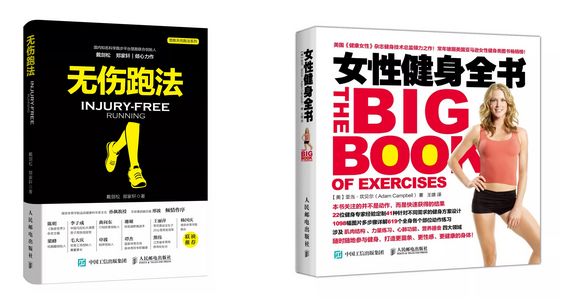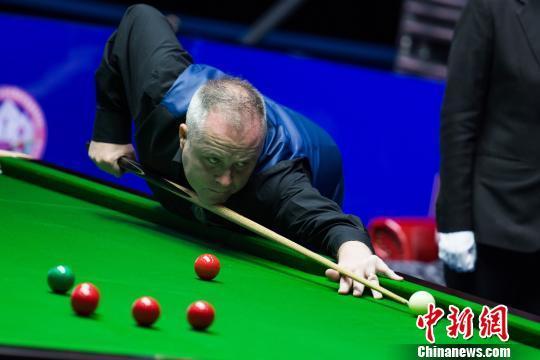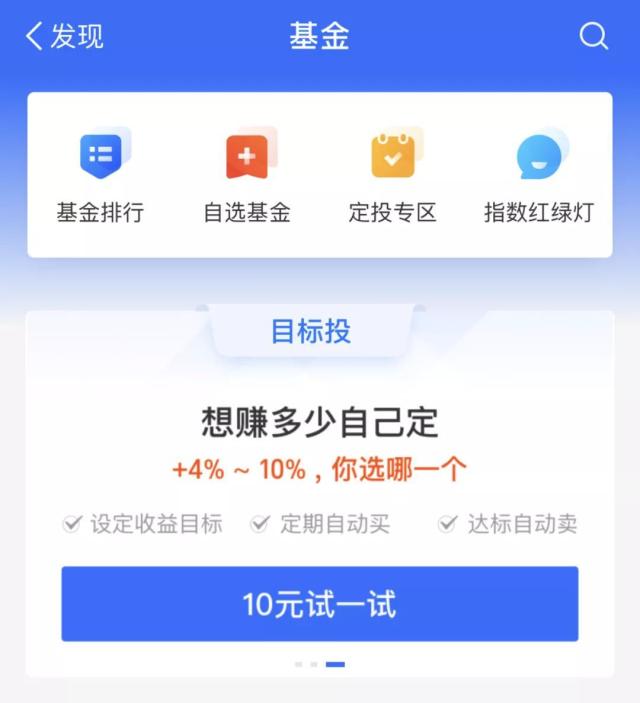Source: Xiaobai reads finance and economics
If you want to avoid detours in the investment process, learn the correct investment methods, explore more investment directions and possibilities, or improve your personal thinking cognition, I recommend that you pay attention to @ All Ways to Rome, and their contents can give you a lot of guidance and inspiration.
Text:
Buffett has read all kinds of investors and investment tools all his life, and he finally comes to the conclusion that investing in index funds is the most suitable financial management method for ordinary investors.
Why do you say that? Let’s take a look at the long-term returns of major US stock indexes:
From 2010 to now, the annualized income of Nasdaq 100 is 15.3%, and that of S&P 500 is 10.2%.
From a long-term perspective, in the past 30 years, the annualized income of the Nasdaq 100 is 11%, and the annualized income of the S&P 500 is 8.5%
This is a very powerful data. The long-term compound income is calculated by the best-performing Nasdaq 100, with a compound growth of 4.15 times in 10 years and nearly 23 times in 30 years. The performance absolutely crushes A shares in the same period, which is the first feeling of many of us.
Actually? In fact, the performance of our A-shares is not as weak as expected, especially for a long time, many index funds can also run out of very amazing annualized returns. After statistics:
The Shanghai and Shenzhen 300 Index has been established for more than 14 years, with an increase of about 300% and an annualized income of 10.2%.
The CSI 500 index has been in existence for more than 12 years, with an annualized income of 8.5%;
In the nearly 30 years since its establishment, the Shanghai Composite Index has achieved an annualized return of 12.8%. During the same period, the annualized income of Shenzhen Stock Exchange was 8.5%;
Therefore, on the average in Shanghai and Shenzhen, the long-term annualized return of our A-share index can reach about 10% (provided that it is held for a long time), which is estimated to subvert the cognition of many people.
What is the concept of annualized 10%? Our bank deposit interest rate is about 2% annually, the high point of Yu ‘ebao is in the early 2.5%, and the explosive bank guaranteed wealth management products are more than 4%. Therefore, if short-term risks are not considered, an index fund that can achieve an annualized rate of 10% for a long time is definitely the best way to manage money.
This also explains why the fixed investment of the fund is an enduring investment topic, because for ordinary investors, especially for us office workers, the fixed investment of the fund is undoubtedly the best choice to fight inflation and realize the snowball of wealth.
In view of this, this article will provide you with a detailed investment strategy, hoping to help you invest.
Where to buy
The purchase channels of funds are not single, which are specifically divided into on-site funds and off-site funds:
1. OTC funds
For example, securities firms, banks’ websites and mobile apps all have subscription channels for funds, as well as common third-party financial platforms (Alipay, Tiantian Fund, etc.). The funds in these channels are OTC funds. I don’t introduce how to buy and sell them here. If you don’t understand, you can ask your account manager.
Features: There are many types of funds, which are easy to operate. Generally, you can manually set the automatic deduction and fixed investment time, etc., and you don’t need to spend time on management to truly realize "brainless" fixed investment.
Disadvantages: the handling fee is relatively high, which may involve redemption fee, management fee, sales fee, etc., and the trading is lagging behind. In particular, it may take 1-7 working days for redemption funds to arrive, but it actually has little impact on long-term fixed investment.
2. On-site fund
Funds traded in the exchange are also traded through our stock account. The specific operation is the same as that of stocks. Just enter the fund code (for example, 510310: CSI 300ETF) and buy it.
Features: the handling fee is very low, even free of handling fee; Real-time trading and quick use of funds.
Disadvantages: First of all, you have to have a stock account, secondly, you need to manually buy on a regular basis (because it is a fixed investment), and thirdly, the variety is relatively single.
As for the specific choice of fixed investment channel, if you are a novice and afraid of trouble, you can buy directly through the off-exchange fund channel. If you are familiar with buying and selling stocks and plan to invest in the index ETF, it is more appropriate to choose the on-exchange fund.
What to buy
1. Types of funds
There are many kinds of funds. In general, there are five types of funds on the market: stock funds, hybrid funds, bond funds, money funds and index funds. Different types of funds correspond to different risk levels and expected returns. The specific choice should be decided according to your personal risk preference:
Active-stock fund
Robust-Hybrid and Index Funds
Conservative-Debt-based and Goods-based
From the perspective of investment philosophy, funds are divided into active management funds and passive management funds. Active management funds are the above stock funds, hybrid funds and bond funds. Passive funds refer to "index funds".
The difference between the two is that active funds are selected by fund managers, and subjective trading operations are carried out according to their own investment style and human judgment, and their performance may be good or poor; However, passive funds (that is, index funds) generally copy the index trend completely, and do not need fund managers to choose stocks, but only adjust the proportion of positions, without considering the impact of human factors on performance.
Here we focus on passive index funds, which are divided into broad-based index, industry index and theme index funds. The most familiar SSE 50 Index, CSI 300 Index and CSI 500 Index belong to broad-based index. Industry indexes are easy to understand, such as bank index, securities index, military industry index and so on; Among the more popular theme indexes, there are the CSI dividend index and the Shenzhen dividend index (the dividend yield is extremely high), the Belt and Road Index, and the new energy index.
For the younger generation and office workers, it is recommended to choose investors who are not too conservative and prefer active management. It is recommended to choose stock funds or hybrid funds, while I personally strongly recommend passive index funds as our long-term fixed investment varieties.
2. How to judge the merits of the fund?
There are thousands of funds in the market, and it is hard to avoid being dazzled when we choose them. How to judge the quality of a fund should be the most concerned issue for investors. I think we can roughly measure the quality of a fund (stock, mixed and bond funds) from the following aspects:
(1) Look at the size and strength of the fund company.
It doesn’t mean that the greater the reputation of a fund company, the better the performance of its funds will be. This is not certain, but if two funds of the same type are selected, the one with stronger comprehensive strength will definitely be preferred.
Ranking of fund management scale of domestic fund companies
(Source: Haobu Fund Network)
(2) Look at the fund rating
Generally speaking, you have a fund rating on the page where you buy a fund, that is, counting "stars". Five stars have the highest rating and one star has the lowest rating, which is assessed by a third-party professional rating agency. The fund with the higher rating is definitely more advantageous in choosing.
(3) Look at past performance
There are short-term and long-term performance, with short-term performance of 1, 3 and 6 months and long-term performance of 1, 3 and 5 years. If a fund can rank in the top 20% of the same type of fund in most cases, it can be said that it is a very good fund. In addition, it is better to compare the market index in the same period and outperform the market index for a long time.
Performance chart of a fund in the past year
If the short-term rate of return is very high, it does not mean that it is a good fund. If the long-term performance is flat or even poor, only the recent increase is particularly large, which should be avoided, and the high probability of performance cannot be sustained. In particular, the funds with hot publicity and top earnings in recent days are probably just advertising effects, but they have been declining for a long time after buying them. According to past data, the top three funds in the year often perform very badly in the second year.
(4) Look at the trend of net worth
The trend of net value should choose the type of steady rise, and those net value charts with great ups and downs should be avoided as far as possible. In addition, it depends on its maximum retracement, which means the range between the highest and lowest net worth at a certain stage. The smaller the range, the better, which represents the fund’s ability to control risks. In addition, there are some professional indicators, such as Sharp ratio and standard deviation. In fact, it is not necessary for whites to understand these concepts. Anyway, the conclusion is that the higher the Sharp ratio, the better, and the smaller the standard deviation.
In a word, an excellent fund’s net value trend should have these characteristics: the bull market can keep up, the bear market retreat is small, and the overall performance rises steadily.
(5) Look at the fund manager
As the manager and person in charge of the fund, the fund manager’s ability affects the performance of the whole fund. We usually identify the fund manager from the aspects of working years and working experience. Generally speaking, the richer the working experience, the better, because the fund manager who has been baptized by the market is often more reliable. Therefore, it is appropriate for fund managers to have more than 5 years of service. In addition, it depends on his/her past performance in managing funds. The better the historical performance, the more reliable the representative ability. If the performance of the products managed in the past is not satisfactory, how can you expect him to perform well in the future?
Especially for a newly listed fund, there is no reference to the past net value trend, so the most important consideration is the fund manager.
The above are the simplest and most intuitive methods for judging actively managed funds, which are more suitable for our public investors to conduct preliminary screening of funds.
For most index funds, the place to consider is not so complicated. For index funds of the same sample, the smaller the index tracking error, the better, and the larger the fund size, the better. For example, it is also the Shanghai and Shenzhen 300 Index Fund. We should try our best to choose the top 510300 (Huatai Bairui), 510330 (Huaxia) and 510310 (Yifangda) funds with large scale, good liquidity and high reputation.
Of course, you can also choose some enhanced index funds. A good enhanced index fund can provide an additional 3%-5% alpha income every year, but this requires you to spend some time studying and looking for it.
As for the selection of index funds, because the funds track the market index, we basically don’t need to consider fund managers and historical trends, but we only need to judge the market and style of the future market and the valuation of the current index.
For example, under the policy of "innovation" in the early years, the GEM index and the CSI 500 index significantly outperformed other indexes, with a huge increase; In recent years, however, the market style favors the return of the value of high-quality industry leaders, and the SSE 50 Index, which represents China’s "core assets", has the strongest performance. Then try to choose an index fund that is undervalued and has great potential in the future to make a fixed investment.
Generally speaking, my personal view and attitude is that most actively managed funds in the market are in the hands of others because there are too many complicated places to consider and there are many pits. I don’t recommend focusing on actively managed funds with long-term outstanding performance. In fact, according to statistics, 80% of actively managed funds can’t outperform the market index in the long run.
This is why I agree with Buffett’s suggestion that we should use index funds as long-term fixed investment varieties.
3. Portfolio allocation of funds
The risk of fixed investment of a single fund is relatively concentrated. If the amount of fixed investment is not large, such as several hundred yuan per month, it is not a big problem for a single fund to fix investment. If it is more than several thousand yuan per month, it is recommended to allocate 2-3 funds as a fixed investment combination.
Generally speaking, the combination of stock/hybrid funds and index funds will be more balanced, but as mentioned above, because I have subjective prejudice against actively managed funds, my personal fixed investment allocation portfolio will definitely choose index funds.
Then, taking the fixed investment index fund as an example, how to match it better?
Option 1: 1 broad-based index fund +1 industry index fund, such as 1 Shanghai and Shenzhen 300 index +1 bank index fund;
Option 2: one broad-based fund, one industry fund and one theme index fund, such as one SSE 50+1 consumer index and one CSI dividend index fund;
(The above scheme mainly talks about collocation logic, and the specific target does not constitute investment advice.)
For the proportional allocation of multiple funds, I think there should be a focus, and a 1: 1 ratio can also be used, but it is too moderate, because the fund itself is a portfolio with certain hedging properties, and it should be biased to obtain better returns. For example, one of the two funds can allocate 60% of the amount, the other one accounts for 40%, and the three funds can be allocated according to the weight of 5: 3: 2. The optimistic funds should be allocated with emphasis.
How to buy
1. Fixed investment cycle
Generally speaking, it is necessary to prepare for the fixed investment for at least 3-5 years, because the short time of fixed investment is of little significance because of the characteristics of China’s securities market.
2. Fixed investment frequency
You can make a fixed weekly investment or a fixed monthly investment. It is recommended to make a fixed monthly investment, which is consistent with our salary cycle. The specific date of fixed investment need not be too entangled, it can be the 1st of each month, your salary day, or your lucky number date. Just make sure you vote once a month.
3. Fixed investment amount
The specific amount of fixed investment per month varies from person to person. Usually, it is better to use half of your remaining cash every month as the fixed investment fund, that is, the fixed investment amount = (income-expenditure) ÷2. For example, if your monthly salary is 8,000 and all fixed expenses are 5,000, then you should take 1,500 as the fixed investment amount per month.
The rest will be considered for entertainment, consumption, or short-term capital preservation and financial management projects such as Yu ‘ebao, which will be used as working capital.
4. Active strategy
Generally speaking, the amount of fixed investment is fixed every month, but in order to maximize the income, we all want to buy more when we are at a low level and less when we are at a high level. Is it possible to achieve this?
In fact, it is possible. Here, a common timing method for the fixed investment of index funds is the market valuation percentile method (or price-earnings ratio percentile). The valuation percentile refers to the historical position of the current valuation level. For example, the current score is 20%, which means that the current valuation level of the index fund is lower than 80% in history, which is underestimated and the investment risk is low. Conversely, the higher the valuation score, the higher the risk level.
You don’t have to think this is a very complicated thing, because at present, mainstream platforms directly display this value for us to see, and we don’t need to calculate it ourselves, as long as we can use this data.
Everyone has different considerations about this valuation level, so my personal suggestion is:
0 < PE percentile ≤20%
It is an underestimated level, and the amount of fixed investment should be increased;
20% < PE percentile ≤50%
Belong to a reasonably low level, and make a fixed investment according to the normal rhythm;
50% < PE percentile ≤70%
Belonging to a reasonably high level, the amount of fixed investment should be reduced;
70% < PE percentile ≤100%
It is overvalued, stop fixed investment, and gradually sell the fund;
According to this method, we can appropriately increase the amount of fixed investment when the valuation level is low. For example, the above 1500 can be increased to 2000 or 2500, and the stock index can be reduced to 1000 or 500 yuan when the stock index is high.
When to sell
Fixed investment funds are not always bought in buy buy. Although our fixed investment plans are carried out in 3-5 years or even more than 10 years, if there is a big bull market during the period, we should resolutely sell them, not talking about faith, but we want profits.
When should the fund be sold? The end of the bull market will definitely be sold. The difficulty lies in how we judge the end of the bull market, which is actually a century-long problem.
We might as well use the valuation method mentioned above+selling in batches to solve the problem of take profit that puzzles us. When the PE percentile is higher than 70% (or 80%, depending on personal risk preference), whether the bull market is over or not, we all agree to stop fixed investment and start selling funds.
The way of selling can be to clear the warehouse at one time or sell it in batches. Personally, I suggest to sell it in batches at the ratio of 4321. When the valuation score reaches 70%, sell 40% of the positions first, and then sell the remaining 30%, 20% and 10% in turn for every 5% or 10% increase until the positions are empty, thus completing the whole fixed investment cycle.
The above is just one of the ideas of the fund’s profit-taking method. If you are sure of the judgment of the end of the bull market, such as the grasp of market sentiment (the crazy influx of market aunts, the crazy reports of the news media everywhere, etc.), the assistance of technical indicators, etc., you can settle your position yourself and settle down.
Some principles of fixed investment of funds
1. With regard to stop loss, fixed investment funds try not to stop loss, but for actively managed funds, if there is a good market, it will not rise, if the market falls, it will fall more fiercely, fund managers will change frequently, rat warehouses, etc., it is recommended to stop loss in time.
For index funds, we will resolutely not stop loss, because in the long run, fixed investment in index funds is an investment behavior that will definitely make money.
2. In the case of a loss of 20%-30%, it is of little significance to continue to make a fixed investment. It is recommended to buy directly in one or several large amounts to dilute the cost, because your fund’s fixed investment portfolio can lose money to this extent, which proves that the market has experienced a big decline or is at an undervalued level. At this time, it is most appropriate to buy in large amounts. This operation is only for index funds.
3. It is best for the fund to invest in idle money that has not been used for several years. If it is needed in the short term, it is good to put the balance treasure or short-term financial management. There is no need to invest in the fund.
tag
Fixed investment in the fund is a low-risk financial technique for us to realize wealth appreciation, rather than a trick to get rich overnight. We should not have too high expectations for short-term effects. But in the long run, don’t underestimate the magic of compound interest of fixed investment.
Undoubtedly, the investment enthusiasm of houses has become a thing of the past. In the next cycle of monetary easing and low interest rates, looking forward to the next decade or even longer, A shares will become the best place for asset allocation.
Therefore, the expectation of 10% annualized index income is not extravagant hope. Combined with the extra income provided by our active strategy of fixed investment, it is expected to insist on the fixed investment of index funds for a long time and get 12%-15% annualized income return.
12%-15%, the compound growth in five years is 1.8-2 times, in 10 years it is 3-4 times, in 20 years it is 10-16 times, and in 30 years it is 30-66 times. Are you ready?
Finally, I will give you a selection of three good articles about Rome, hoping that you can get more inspiration and thinking from them.









































